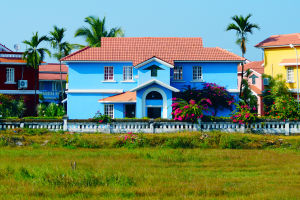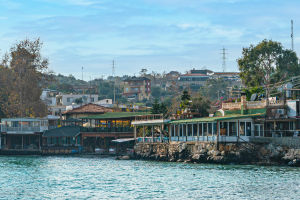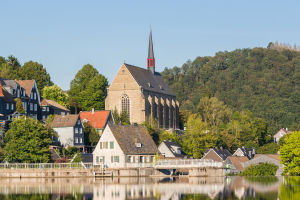Welcome Lykkers! Nestled in the serene landscapes of North Korea's Kangwon Province lies Samilpo Lake, a breathtaking natural treasure that offers a glimpse into the country’s lesser-known natural wonders.
Known for its pristine waters, picturesque islands, and cultural significance, Samilpo is a favorite destination for both locals and international visitors seeking tranquility and scenic beauty.
Samilpo
The Name and Its Origins
The name "Samilpo" translates to "Three-Day Lake" in Korean. According to legend, the lake’s beauty was so captivating that visitors would spend three days exploring and admiring its surroundings before they could bring themselves to leave. This poetic name reflects the timeless allure of Samilpo, which has inspired poets, painters, and travelers for centuries.
Geography and Features
Samilpo is located near the Kumgangsan Mountains, one of North Korea’s most renowned natural landmarks. The lake covers an area of approximately 1.76 square kilometers and features over a hundred small islands dotting its surface. These islands vary in size and shape, with some densely forested and others adorned with rocky outcrops, creating a striking contrast against the calm, mirror-like waters.
The surrounding landscape is equally captivating, with rolling hills, lush greenery, and the dramatic peaks of the Kumgangsan Mountains providing a stunning backdrop. The area’s serene ambiance makes it a popular spot for relaxation, meditation, and photography.
Cultural and Historical Significance
Samilpo is not just a natural wonder but also a site of cultural and historical importance. It has been celebrated in Korean literature and art for centuries, with many works paying homage to its ethereal beauty. The lake has also played a role in traditional Korean folklore, with tales of love, longing, and mythical creatures associated with its waters.
Additionally, Samilpo holds a special place in Korean history as part of the Kumgangsan region, which was historically considered a sacred and spiritually significant area. During the Joseon Dynasty, the region was visited by scholars, monks, and artists seeking inspiration from its natural splendor.
Tourism and Accessibility
While North Korea remains one of the world’s most isolated countries, Samilpo is part of the Kumgangsan Tourist Region, which has been developed to attract visitors. Before the suspension of inter-Korean tourism in 2008, the lake was a key stop for South Korean tourists visiting the Kumgangsan area.
Visitors to Samilpo can enjoy a leisurely boat ride across the lake, allowing them to explore its many islands up close. Hiking trails in the surrounding hills offer panoramic views of the lake and its picturesque setting. There are also pavilions and rest areas where visitors can relax and take in the serene atmosphere.
Flora and Fauna
The biodiversity of the Samilpo area adds to its appeal. The lake and its islands are home to a variety of plant species, including pine and deciduous trees that create a stunning palette of colors throughout the seasons. In spring, cherry blossoms add a touch of delicate pink to the scenery, while autumn transforms the area into a vibrant tapestry of reds and oranges.
Wildlife enthusiasts may also spot various bird species around the lake, including migratory birds that use it as a resting spot during their journeys.
Conservation Efforts and Challenges
Despite its natural beauty, Samilpo and the surrounding Kumgangsan region face challenges related to environmental conservation and political tensions. The area’s isolation and limited access have helped preserve its pristine condition, but the lack of comprehensive environmental management poses potential risks.
International cooperation in environmental protection, along with sustainable tourism practices, could help ensure the long-term preservation of Samilpo’s unique ecosystem.
A Symbol of Peace and Unity
Samilpo and the greater Kumgangsan region have often been seen as symbols of potential peace and unity on the Korean Peninsula. The lake’s tranquil beauty and historical significance make it an ideal setting for fostering dialogue and understanding between North and South Korea.
Samilpo stands as a testament to North Korea’s rich natural and cultural heritage. Its stunning scenery, tranquil ambiance, and historical significance make it a unique destination that captivates the hearts of those who visit. While political and logistical challenges may limit access, the lake’s enduring beauty and symbolism offer hope for a future where more people can experience its wonders. For now, Samilpo remains a hidden gem, waiting to inspire those who seek its serene embrace.


